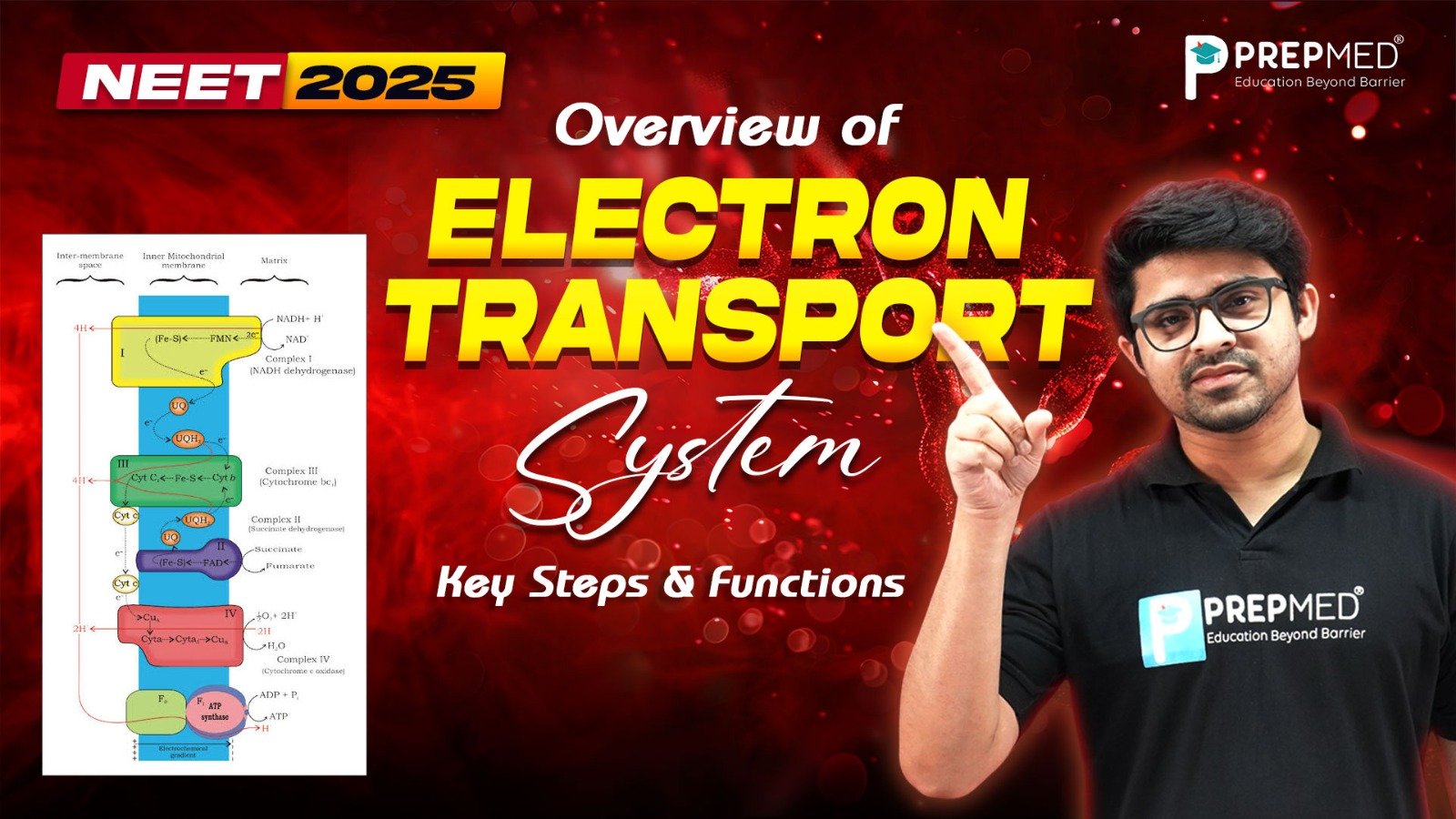April 02, 2025
Overview of Electron Transport System: Key Steps & Functions
The Electron Transport System (ETS) is a crucial component of cellular respiration that plays a central role in producing energy within cells. This process takes place within the inner mitochondrial membrane of eukaryotes and across the plasma membrane of prokaryotes.
Explain the Electron Transport System

The Electron Transport System helps transfer electrons across different protein complexes to make ATP, which is the primary energy source for cells. This process occurs after the breakdown of glucose in earlier stages of respiration, such as glycolysis and the citric acid cycle (Krebs cycle).
Key Components of the Electron Transport System
The key components of the Electron Transport System include:
- Electron Carriers: The Electron Transport System accepts electrons obtained from NADH and FADH2 produced during different phases of cellular respiration (glycolysis, pyruvate decarboxylation, and the citric acid cycle). These carriers (NADH and FADH2) pass their high-energy electrons to the first complex in the chain, known as Complex I (NADH dehydrogenase) for NADH and Complex II (succinate dehydrogenase) for FADH2.
- Protein Complexes: The Electron Transport System consists of four primary protein complexes:
- Complex I (NADH dehydrogenase): Complex I (NADH dehydrogenase) receives electrons from NADH while passing them to coenzyme Q (ubiquinone). During this process, Complex I pushes protons (H+) from the mitochondrial matrix into the intermembrane space, thus creating an electrochemical gradient.
- Complex II (Succinate dehydrogenase): Complex II (Succinate dehydrogenase) receives electrons from FADH2 and transfers them to coenzyme Q. The Sequence of electron flow in Complex II features a unique distinction from Complex I since it avoids pumping protons across the membrane.
- Complex III (Cytochrome bc1 complex): Complex III (Cytochrome bc1 complex) receives electrons from coenzyme Q and then transfers them to cytochrome c. During this transfer, Complex III also pumps protons across the membrane.
- Complex IV (Cytochrome c oxidase): Complex III (Cytochrome bc1 complex) receives electrons from coenzyme Q and then transfers them to cytochrome c. Oxygen combines with both the electrons and protons to form water (H2O) molecules.
- ATP Synthase: The enzyme ATP synthase functions together with the Electron Transport System without being directly included in electron transport chain activities. A proton gradient is created when protons are pumped by the protein complexes across the mitochondrial membrane. The protons flow back into the mitochondrial matrix through ATP synthase, which uses this energy to synthesize ATP from ADP and inorganic phosphate.
Key Steps of the Electron Transport System
- Electron Transfer to Complex I and II: The process begins with the electrons carried by NADH and FADH2. NADH donates electrons to Complex I, while FADH2 donates electrons to Complex II. These electrons are transferred to ubiquinone, which then carries them to Complex III.
- Electron Transfer to Cytochrome c: Complex III receives electrons from ubiquinone and passes them to cytochrome c. As electrons move through these complexes, protons are pumped across the inner mitochondrial membrane, creating a proton gradient (also known as the electrochemical gradient or proton motive force).
- Final Electron Transfer to Oxygen: At Complex IV, cytochrome c donates the electrons to oxygen. Oxygen is reduced to form water, which is why oxygen is referred to as the "final electron acceptor" in the chain.
- Proton Gradient and ATP Production: The protons pumped across the membrane accumulate in the intermembrane space, creating a high concentration of protons relative to the matrix. This electrochemical gradient generates a force that drives protons through ATP synthase. As protons flow through ATP synthase, the energy released is used to convert ADP and inorganic phosphate into ATP.
Functions of the Electron Transport System
The primary function of the Electron Transport System is to generate ATP, which is essential for numerous cellular activities. This is achieved by the transfer of electrons, which creates a proton gradient that drives the synthesis of ATP through chemiosmosis. The energy produced in this process is critical for a wide range of cellular functions, such as muscle contraction, active transport, and biosynthesis.
What is the role of the Electron Transport System?
Additionally, the electron transport chain plays a key role in cellular respiration, providing the energy needed for aerobic organisms to survive. Without the ETS, cells would be unable to generate sufficient energy in the form of ATP, leading to cell death.
Let’s have a look at one of the most important questions for NEET 2025:
Question:
Match the columns and select the correct combinations:
|
Electron carrier
|
Number of protons carried per electron transfer
|
Gives an electron to
|
- Ubiquinone
|
Two
|
Complex III
|
- Complex II
|
Four
|
Ubiquinone
|
- Complex III
|
Two
|
Cytochrome C
|
- Complex IV
|
One
|
Oxygen
|
- a and b
- a and c
- c,d
- b,d
The correct answer is: Option 3
Conclusion
The Electron Transport System is a vital part of cellular respiration that contributes to the production of ATP, the primary energy source for cells. Through a series of electron transfers and proton pumping, the electron transport chain harnesses energy from high-energy molecules like NADH and FADH2 to generate ATP. This process is essential for the survival of eukaryotic organisms, as it allows cells to efficiently produce the energy required for various biological processes. By understanding the key components and steps of the Electron Transport System, we can gain deeper insight into how cells maintain their energy balance and function optimally.
FAQs
- What is the role of oxygen in the Electron Transport System?
Oxygen acts as the final electron acceptor in the Electron Transport System. It combines with electrons and protons to form water, which is crucial for maintaining the flow of electrons through the chain.
- What is the proton gradient, and why is it important?
The proton gradient is the difference in proton concentration across the inner mitochondrial membrane. It is important because it generates a proton motive force, which drives ATP production through ATP synthase.
- What would happen if the Electron Transport System were inhibited?
If the Electron Transport System is inhibited, ATP production would be drastically reduced, which could lead to cell death. The cell would rely on less efficient anaerobic pathways, such as fermentation, for energy.







